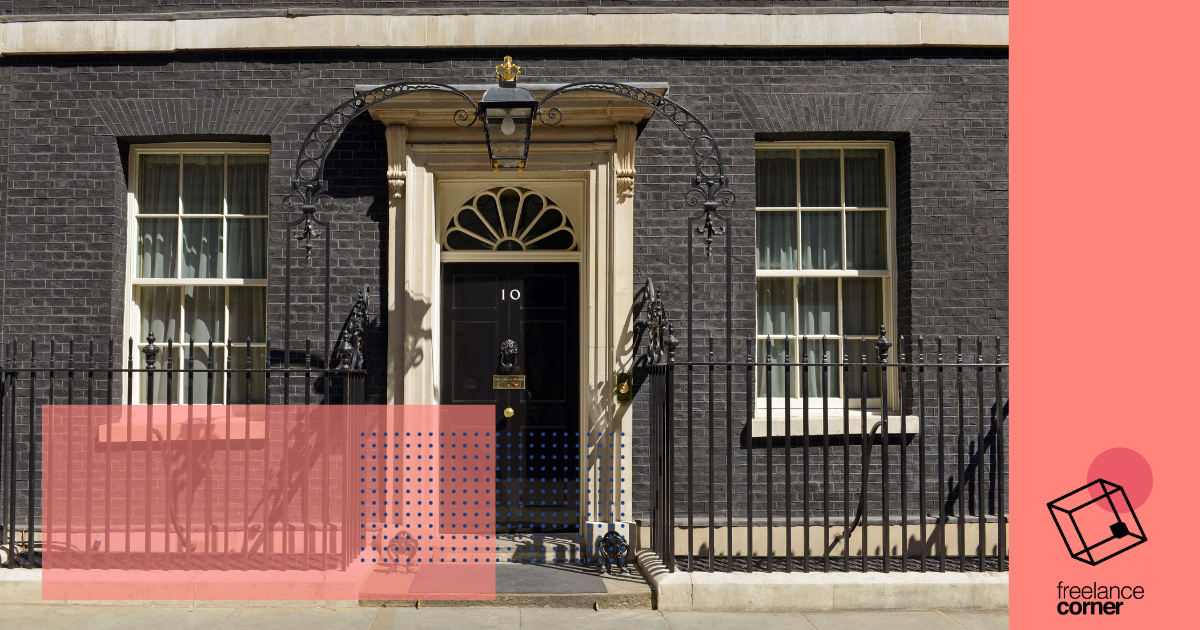By working in complementary medicine, you could develop a rewarding career helping people with injuries or improve their health and relaxation. Find out how to become a freelance massage therapist, and you could develop a successful business which benefits both you, and your clients.
You’ll have a lot of options and freedom if you’re self-employed, whether you choose to work at a hospital or clinic, spa, gym, as a mobile massage therapist or from your home. You could specialise in an area such as sports massage, offer complimentary products and services (we’ve also covered how to become a freelance personal trainer, for example), or concentrate on helping a particular group of clients, from babies, to people with chronic illnesses.
- Why become a freelance massage therapist?
- Which types of massage therapy could you offer?
- What does a freelance massage therapist actually do?
- What qualifications and skills do you need?
- How much could you earn as a freelance massage therapist?
- Finding your first clients as a freelance massage therapist
- More help and support to become a freelance massage therapist
Why become a freelance massage therapist?
As a massage therapist, you’ll be able to start a self-employed career which has a direct impact on the health and wellness of the individual patients you work with. And you won’t need to undergo the more rigorous training and qualifications required for a doctor or nurse, or deal with the immediate effect of a traumatic injury or illness.
Instead, you’ll be providing something which helps rehabilitate people, improve their health, or leave them relaxed and less stressed. Which should mean it’s a positive experience for them, and for you as well.
It also means you’ll be able to schedule your work around other commitments, and choose locations which suit you best. And if you don’t want to sit at a desk all day, the benefits of being active will also be a benefit.
There’s currently strong demand for freelance massage therapists from a variety of clients and employers. The industry has also become increasingly professional, and more valued as a treatment for injuries, especially by sports teams and athletes. So, you could find yourself working with sporting celebrities, or being paid to travel around the world. And the financial reward will be yours alone (after tax, anyway!).
You could also move into other related roles such as becoming a sports therapist, or offer additional wellbeing products and services alongside your core business.
Which types of massage therapy could you offer?
There are a wide range of massage therapies and complementary treatments you could potentially offer as part of your business. Specialising or offering specific services as a focus for your career can help you find the right clients, or make you more attractive to specific employers. Particularly if it’s in a high-demand area, or one which requires specific study.
- Swedish massage: The most common option, involving soft kneading stokes and light tapping to relax muscles
- Aromatherapy massage: Adds scents from essential oils which are believed to have additional positive effects.
- Sports massage: Focused on preventing injuries and recovery
- Baby massage: Often provided to both babies, and taught to parents.
- Pregnancy and post-natal massage: Sometimes used to induce labour, but more often for releasing pressure and reliving pain.
- Thai massage: Stretching and moving in sequences similar to yoga
- Shiatsu massage. A Japanese technique involving rhythmic tapping on acupressure points.
- Hot stone massage: Hot flat, smooth stones are placed on the body allowing the therapist to go deeper into muscle tissue without causing pain.
- Deep tissue massage: Firm, slow pressure on specific body parts usually to relieve patients of pain from chronic injuries or illnesses.
- Indian head massage: Focused on the head, neck and shoulders.
- Reflexology: Uses the pressure points on the feet, hands and ears.
- Chair massage: Concentrates on the neck, shoulders and back
- Lymphatic drainage massage: Encourages lymph fluids to circulate through the body
- Craniosacral massage: To release compression of the bones in the skull, spine and pelvis.

What does a freelance massage therapist actually do?
Actually, performing massages is just one part of your work. And that’s a good thing, as it can be tiring, and potentially damaging to your joints to be giving massages for more than four to six hours each day.
Other tasks you’ll need to take on will include:
- Ensuring informed consent is given by clients before they receive an assessment or treatment
- Checking the medical history, diet and lifestyle of each client
- Identifying why they want or need massage therapy
- Planning a course of treatment
- Advising on wellbeing and making the most of the benefits
- Referring clients to medical professionals as required
- Creating and updating client records
As a freelancer, you’ll also be responsible for organising any training or study to expand your skills or maintain certifications as required. Along with building your client list by marketing and promoting your business, managing your finances, and any other tasks required to be successfully self-employed.
One key area to manage will be ensuring you’re adequately covered for any incidence with appropriate insurance, including public liability, and professional indemnity. Some companies offer specialised policies for massage therapists including Markel (who offer a discount to IPSE members).
What qualifications and skills do you need?
There are no official qualifications required to become a freelance massage therapist, but training and experience will help you to gain clients and ensure you’re providing a safe and professional service which delivers results.
Courses which provide academic qualifications include the Level 3 Diplomas in Massage, Sports Massage Therapy or Complementary Therapies available via NVQ, ITEC, BTEC, VCT or CIBTAC qualifications. It’s then possible to pursue these up to degree-level. Alternatively, you could pursue an advanced apprenticeship to gain some of the knowledge and skills required.
Courses and training are available from a variety of providers. The General Council for Soft Tissue Therapies (GCMT) is the governing body which sets standards for the profession and training. Other professional organisations which can provide guidance include the Complementary and Natural Healthcare Council (CNHFC), the Federation of Holistic Therapists (FHT), the International Institute for Complementary Therapists, Thinktree, the National Association of Massage and Manipulative Therapists, or even the The Society of Sports Therapists if you decide to develop your career with a degree-level qualification. Both the CHNC and FHT will require you to participate in Continuing Professional Development (CPD) programmes which require you to take part in a specific number of activities to develop yourself and your business each year.
While there is no legal requirement, the GCMT recommends you take a course that lasts at least six months full-time or 12 months part-time to be confident that you’re properly trained.
You will also need to check the licensing requirements for your local council, as you may need to register as a therapist, and any premises you’re intending to use. For example, the London Local Authorities Act means you’ll need to be appropriately qualified and experienced, with checks made to ensure you’re able to be approved. And premises will be inspected annually.
Personal skills which are useful for a massage therapist include:
- Communication
- Physical strength and stamina
- Empathy
- Business skills
- Organisation and timekeeping
- Motivation and enthusiasm
How much could you earn as a freelance massage therapist?
With any self-employed career, the potential for income will vary depending on various factors. Figures quoted are for guidance only, as your experience, skills, location, working hours and ability to negotiate with clients are just some of the elements that can lead to higher or lower revenue.
The average salary for a massage therapist in the UK is estimated at £22,150 (Indeed), £28,000 (Talent.com), or £34,012 (Glassdoor). If you’re self-employed, you can set your own rates for treatments, or supplement your income with additional services or products. And increasing your hourly rate can make a huge difference to your income over the course of a year.
Sports massage tends to offer a higher salary potential, particularly if you’re working with top class and elite athletes and sports people.
As a freelancer it’s important to remember that your income will need to account for your business costs, including insurance, travel, and equipment. And in addition to tax, you’ll also need to try and set money aside to cover any time off, whether it’s due to holidays or illness (IPSE Plus membership does include up to £2,000 of illness and injury alongside other benefits)

Finding your first clients as a freelance massage therapist
Once you’ve decided on your new self-employed career, and undertaken training to become a competent freelance massage therapist, you’ll need to start finding your first clients.
There are a variety of potential sources for clients. If you were previously employed at a reasonably-sized company, you could offer your services in your old workplace. Or use local message boards and communities to promote your massage therapy to anyone in the neighbourhood, including at nearby events.
And if you’re active in any sports, then those communities might be interested in treatments from a fellow runner, cyclist or weightlifter etc, as you may be more familiar with the types of strains and problems which occur.
Most mainstream freelance job sites will have an appropriate section for massage therapists, and general advice for any freelancer looking to find clients will apply, whether it’s defining your target market, networking, or scheduling time for outreach. Building a list of local businesses who might offer employment, from hospitals to gyms and spas will give you an initial group to contact. Along with anyone in related areas, from personal trainers to beauticians or hair stylists.
Along with general job boards and outreach, there are businesses such as Secret Spa which match therapists and clients via their platform.
Marketing your business will tend to work best if it ties in with your natural preferences. So, if you’re outgoing and enjoy being in front of a camera, social media and Youtube may be a great option for building awareness. But someone more introverted may prefer to write articles on their own website, or rely more on personal interactions.
The most important thing is to make the most of any satisfied client. Do all you can to encourage referrals, as recommendations from friends and family are typically valued by most people. And also consider capturing testimonials and reviews alongside contact details to follow up with previous clients if they haven’t had a massage treatment in a while, or might need a follow-up for an injury. A whole host of free and paid tools can help you manage your contacts, including email services or Customer Relationship Management (CRM) tools, which will let you know when you last spoke with someone, or they attended for a massage.
More help and support to become a freelance massage therapist
- General Council for Soft Tissue Therapies (GCMT)
- Complementary and Natural Healthcare Council (CNHFC)
- Federation of Holistic Therapists (FHT)
- International Institute for Complementary Therapists
- Thinktree
- National Association of Massage and Manipulative Therapists
- The Society of Sports Therapists
- IPSE
Researching other freelance careers? Why not check out our other guides:
- How to become a freelance SEO consultant
- How to become a freelance web designer
- How to become a freelance writer
- How to become a freelance Virtual Assistant (VA)
- How to become a freelance photographer
- How to become a freelance business analyst
- How to become a freelance event planner or organiser
- How to become a freelance structural engineer
- How to become a freelance coach
- How to become a freelance proofreader
- How to become a freelance bookkeeper
- How to become a freelance content creator
- How to become a freelance illustrator
- How to become a freelance photojournalist
- How to become a freelance hair stylist
- How to become a freelance recruiter
- How to become a freelance translator
- How to become a freelance editor
- How to become a freelance music producer
- How to become a freelance WordPress developer
- How to become an author
- How to become a freelance tutor
- How to become a freelance makeup artist
- How to become a freelance animator
- How to become a freelance photo editor
- How to become a freelance model
- How to become a freelance digital marketer
- How to become a freelance network engineer
- How to become a freelance chef
- How to become a freelance fundraiser
- How to become a freelance data scientist
- How to become a freelance graphic designer
- How to become a freelance accountant or financial consultant
- How to become a freelance interior designer
- How to become a freelance personal trainer
- How to become a freelance filmmaker
- How to become a freelance HR consultant
- How to become a freelance transcriptionist
- How to become a freelance first aid trainer
- How to become a freelance video editor
- How to become a freelance project manager
- How to become a freelance musician
- How to become a freelance social media manager
- How to become a freelance 3D artist or modeller
- How to become a freelance AI prompt editor
- How to become a freelance dog groomer
- How to become a freelance location scout
And you can get support and help if you’re starting out with self-employment, or still in the early stages of building your career, with the IPSE Incubator. The 12-month programme is currently free with IPSE membership, and includes advice, events, webinars, networking and more, tailored to anyone just beginning their freelance business.






